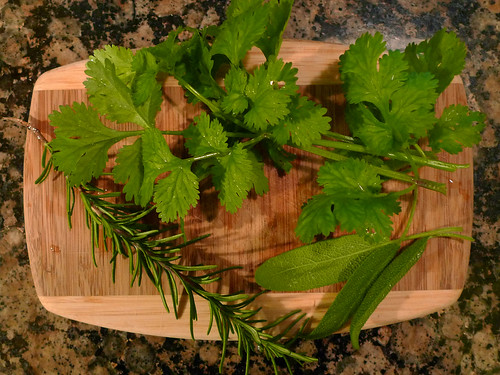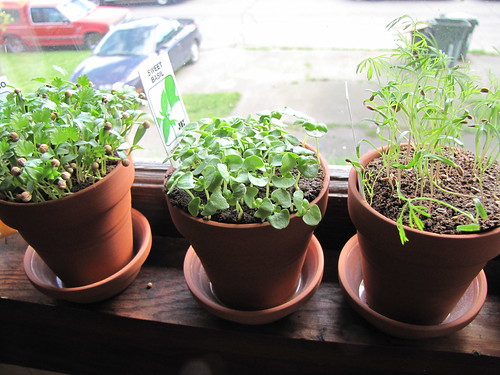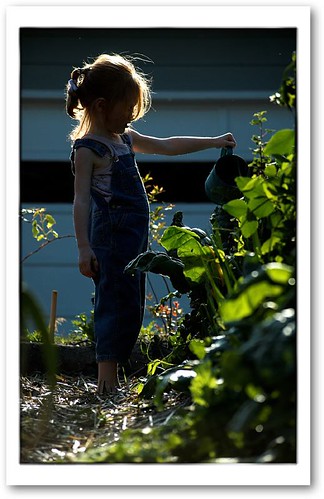
Rosemary, Sage and Cilantro
| Shawn Allen: Flickr
There are many different reasons to start a herb garden. Herbs have both aesthetic and functional value and can be so much more than just pretty plants. These fragrant and unique plants can add life to a bland landscape, then brought inside and used in a seasonal salad or to add flavor to your family meals. Herbs can also be grown and transplanted inside; this gives you the option of fresh herbs year-round, no matter where you live. After gardeners have experimented and perfected their green thumb, some choose to share their passion with family and friends; transplanted herbs in simple terra cotta pots make wonderful gifts.
Starting an herb garden can be very easy. Before you get started, make sure you have the following items on hand:
-
Herb seeds of your choice (parsley, scallions, chives, lavender, mint, dill, etc.)
-
Seeding pots or a portable greenhouse with a removable plastic cover
-
Top soil – ideally, the top soil should be specifically made for herbs, but any type will do.
-
A small gardening shovel
-
Water
-
Labels for your herbs if planting more than one variety in a small area – these can be homemade with pictures of the grown herb, or simply the name of the herb.

A Windowsill Herb Garden |
Wendi Dunlap: Flickr
Fill the small pots or greenhouse with two-thirds of the way with top soil. Leave enough room to place a single seed, or a few seeds, depending on the variety, into the soil. The seeds should then be covers and lightly patted down with a second layer of top soil. Once covered, water the seeds, without overwatering. Place the pots with the seeds in a warm and sunny place. Cover the container with a piece of plastic wrap or plastic lid to seal in heat and moisture to help the growth process. Once the herbs reach between four to six inches high, they can be transplanted into an area in your yard or existing garden. Make sure the herbs have plenty of nutrient rich soil and are watered regularly. Exact water and nutrient requirements will typically be written on the seed packets.
Herbs for Kids!

Ally in the Garden |
Phil Rose: Flickr
Gardening can be a great activity for children. Let your children pick which herbs they would like to plant and make it a family project. Herbs are easy to grow, hardy plants, perfect for children. Children can learn about plants and how they grow, by growing their own herb garden. Later, once the herbs have grown, they can then be picked and used in a health food activity. The following herbs have a great scent and would be great for kids:
- Lemon balm
- Lemon grass
- Sage
- Mint (Peppermint, chocolate, and spearmint)
- Chamomile
- Rosemary
- Thyme
- Lavender
The following list offers fun herb related activities for children of all ages:
Flavorful Cooking
Some say the best part of growing your own herbs is being able to cook with them once they have grown. Herbs are a great way to add flavor to foods, without adding extra calories. Mix up your family meals and incorporate fresh herbs to your recipes; they give fragrance and flavor to any food. Fresh and dried herbs can be very pricey in the grocery store. For families looking to slash their grocery bill, growing your own herbs is a great trick.
Herbal Remedies
Herbs also have a long history in the medical field. Chamomile and lemon grass have been used for centuries and brewed into a tea to relieve mild congestion. Ginseng and garlic are said to improve your immune system. Lavender is commonly used in aromatherapy to relieve stress and promote relaxation. With a wide variety of uses, herbs are an alternative to Western medicine.
The list of resources below provide much more in depth information on herbal medicine.